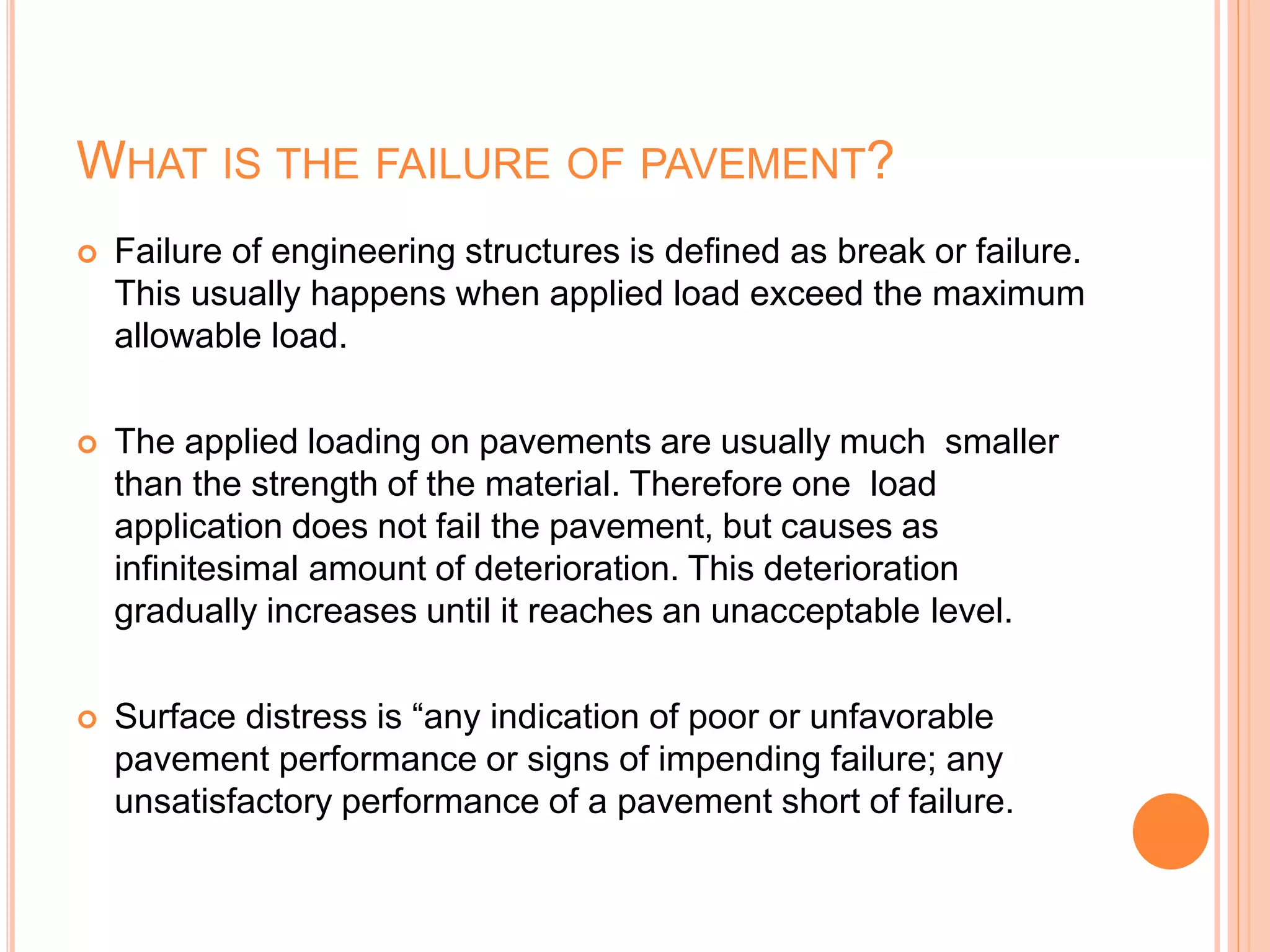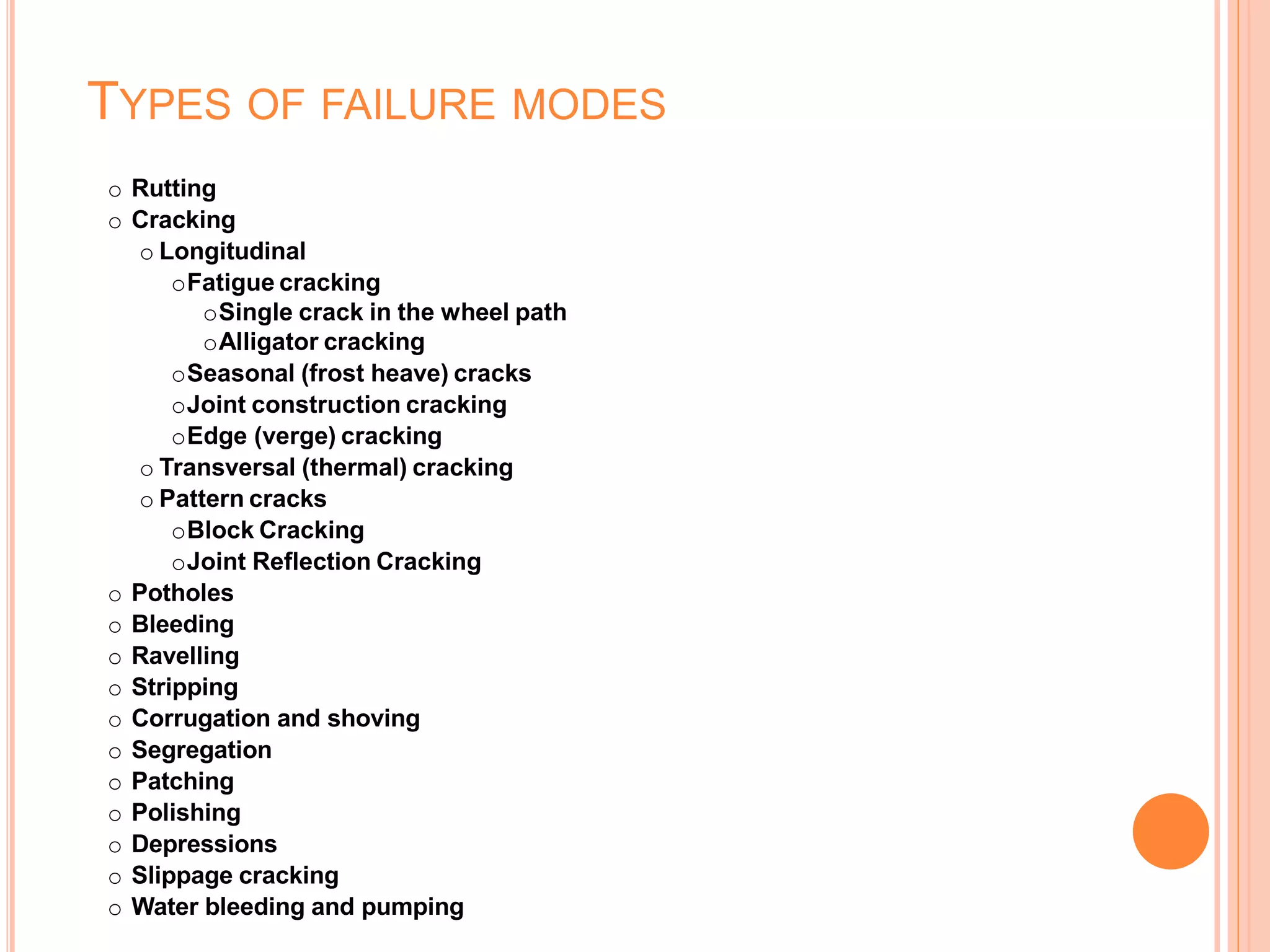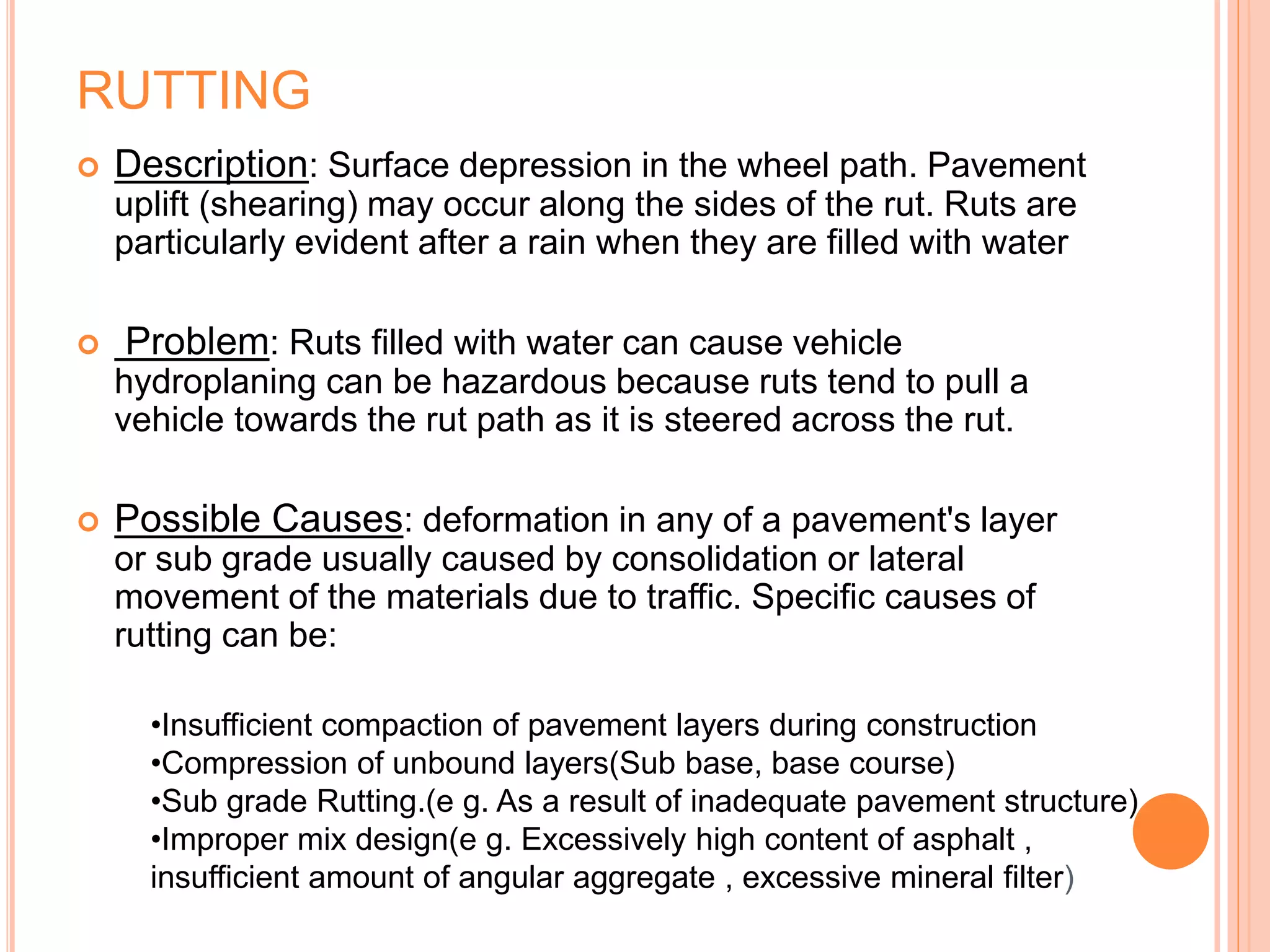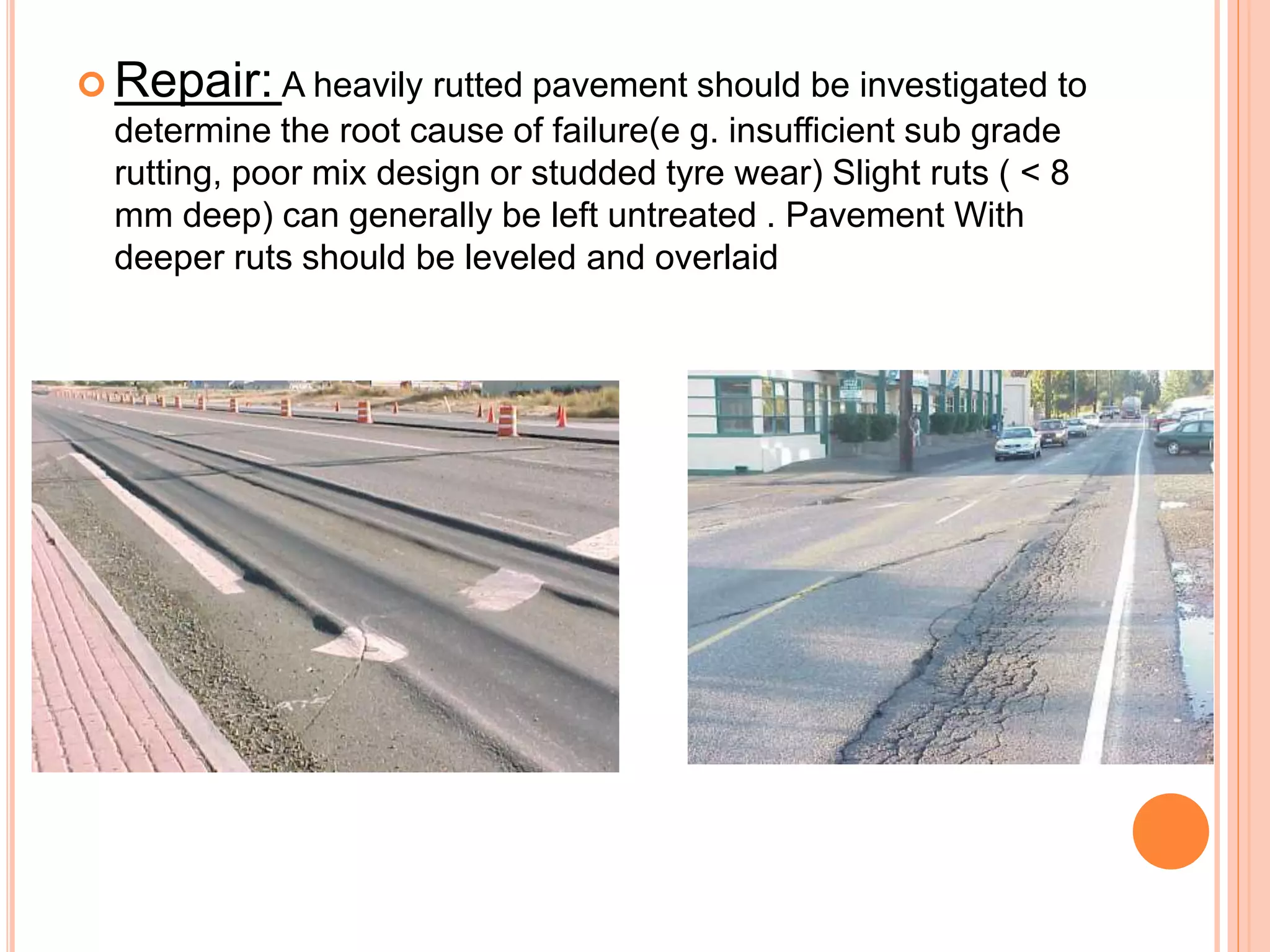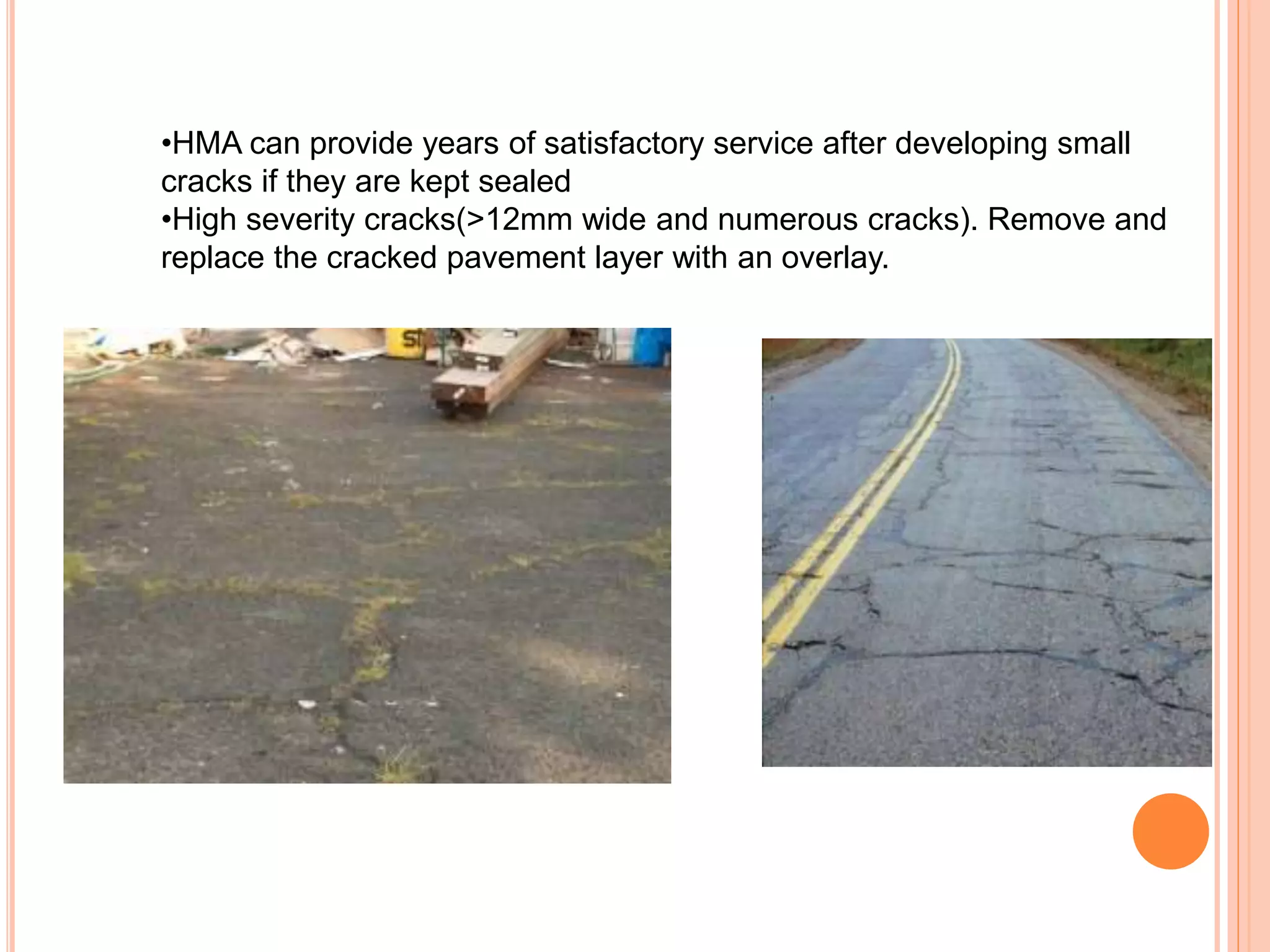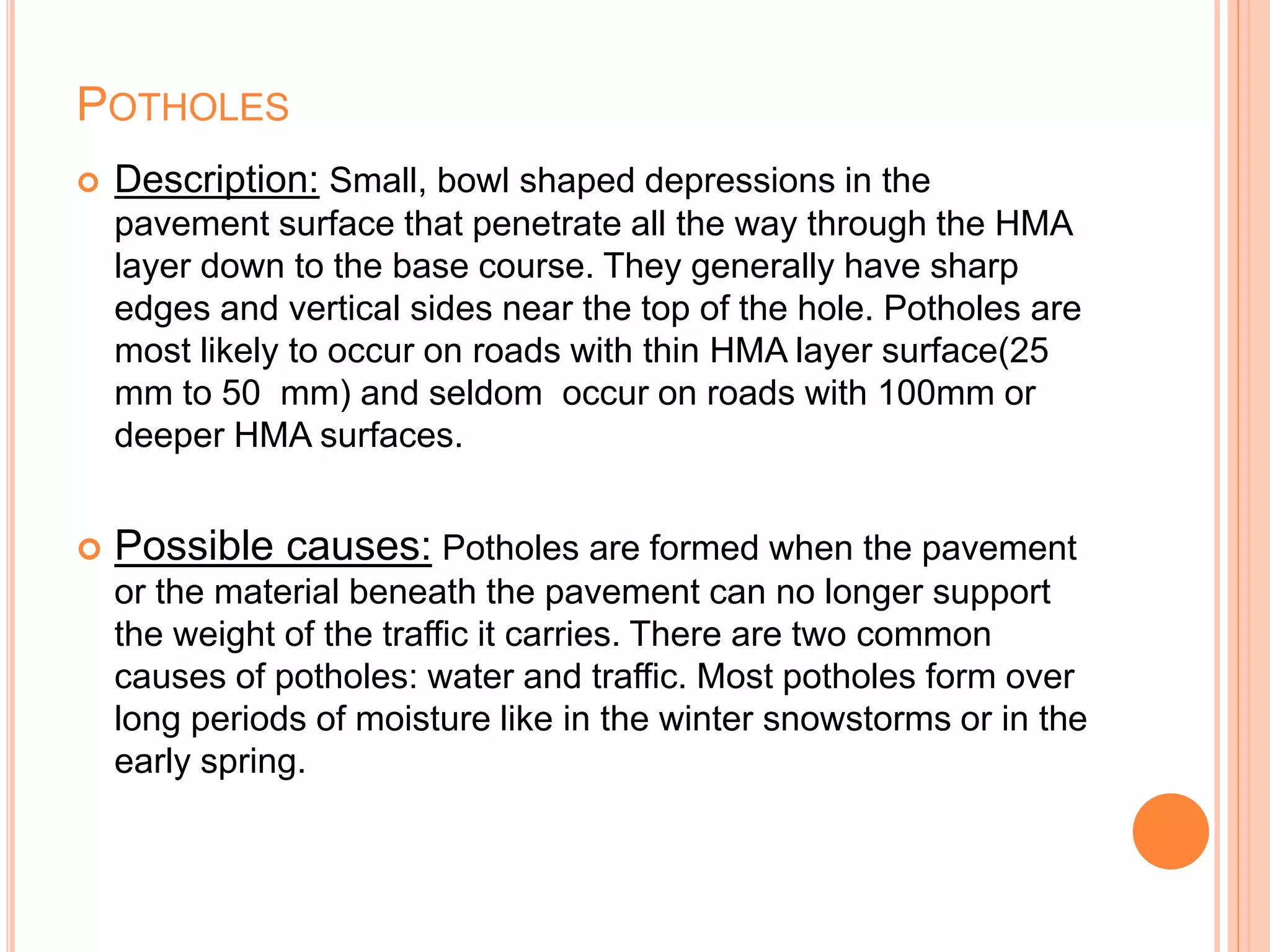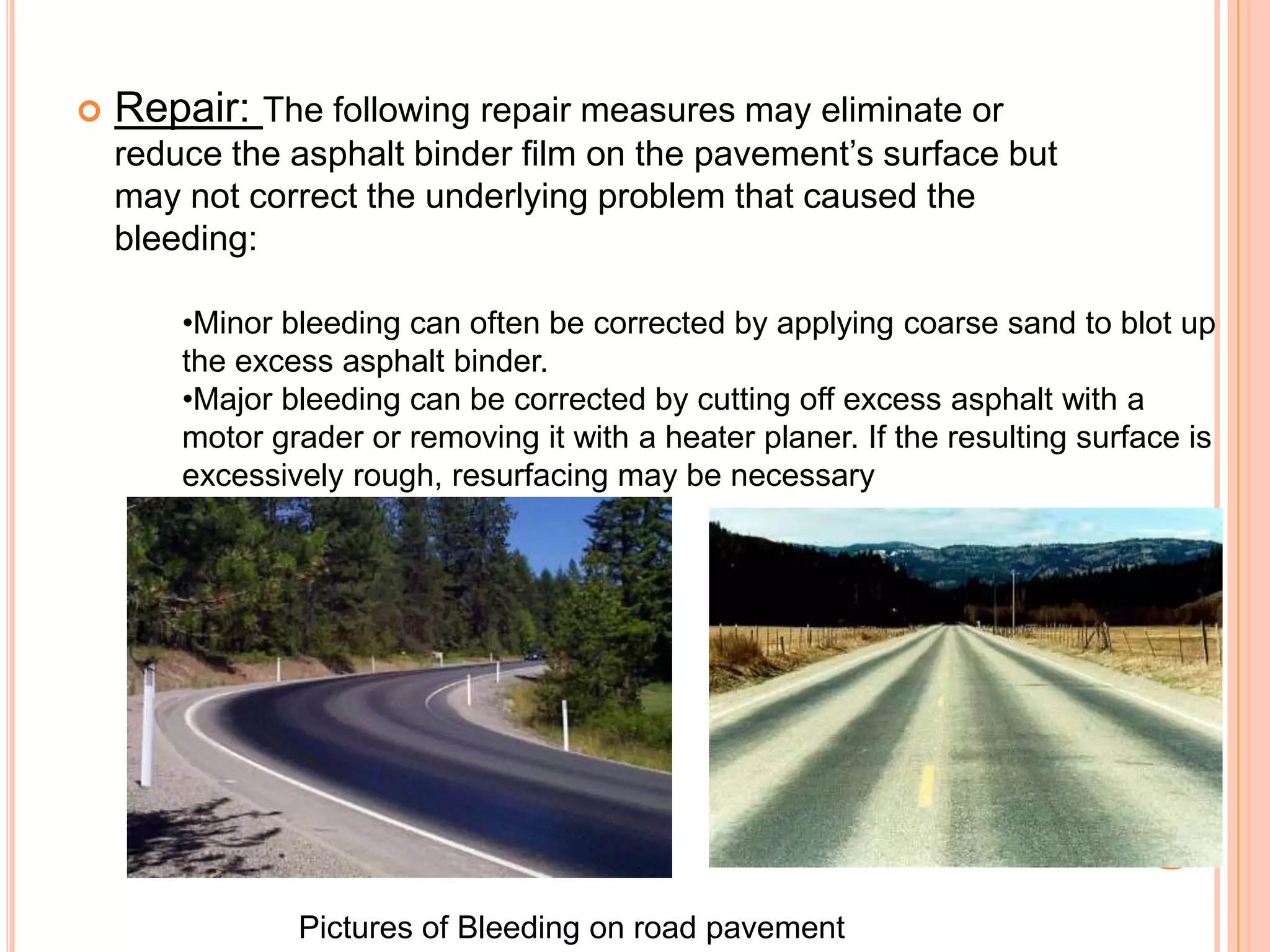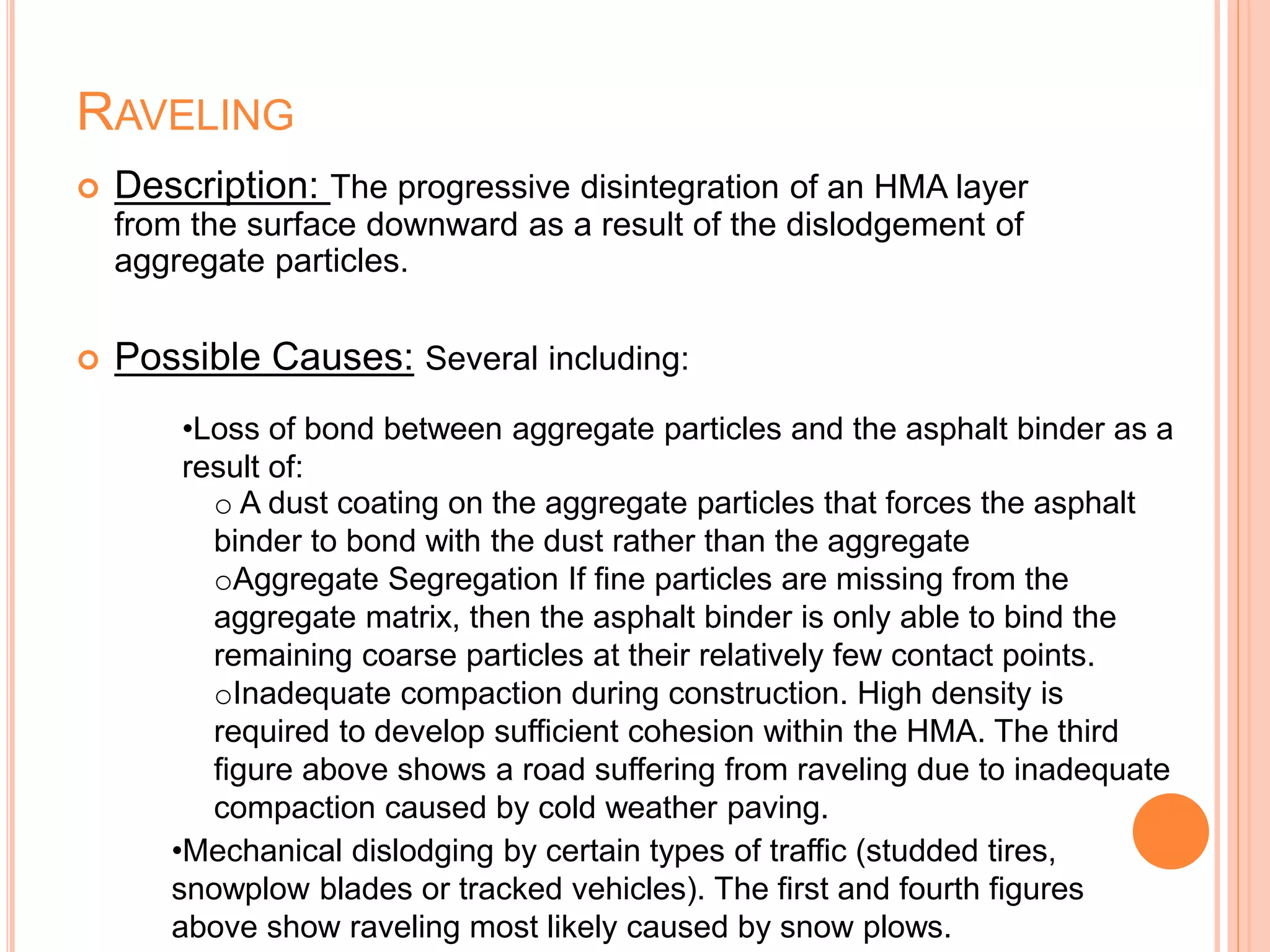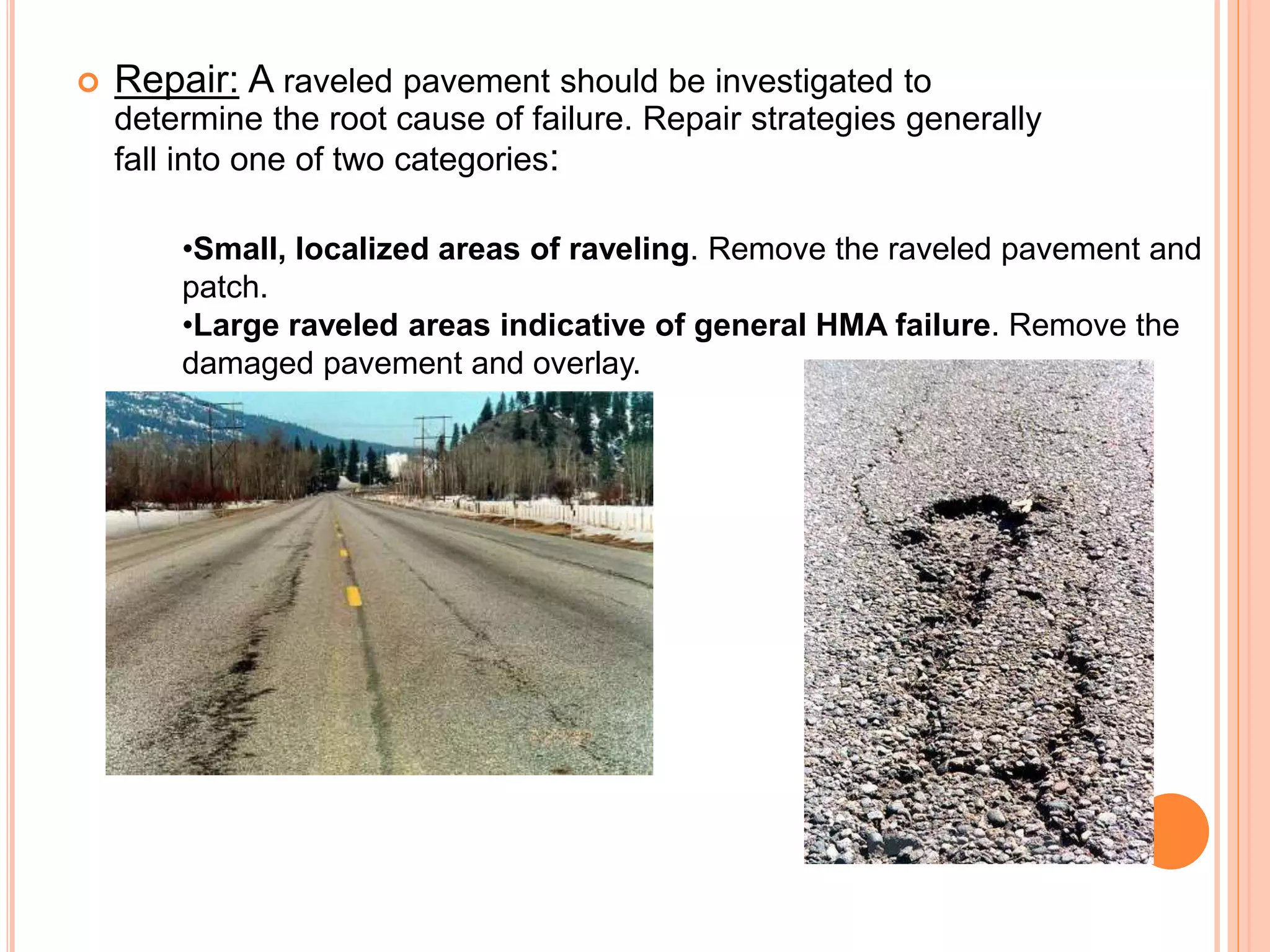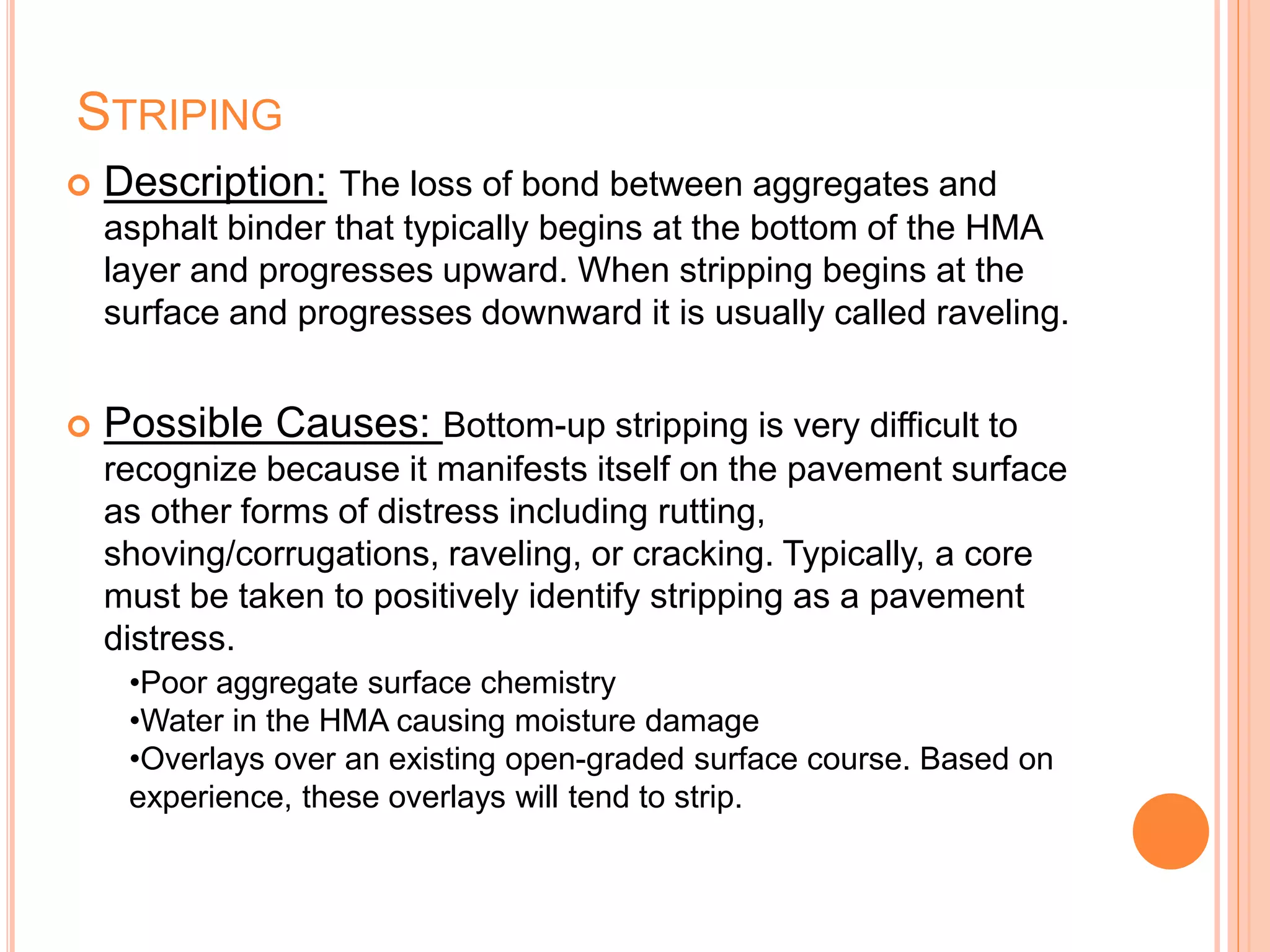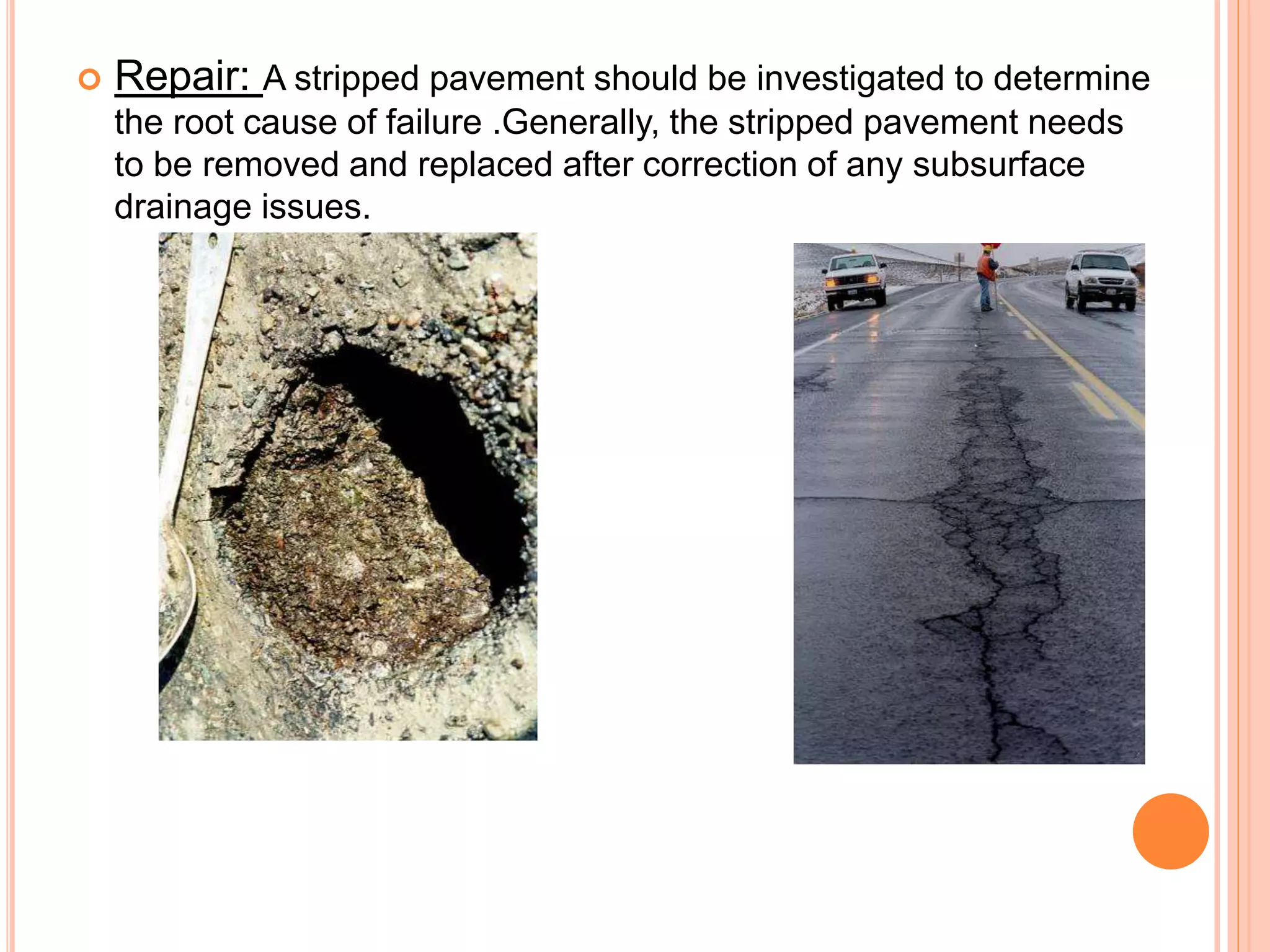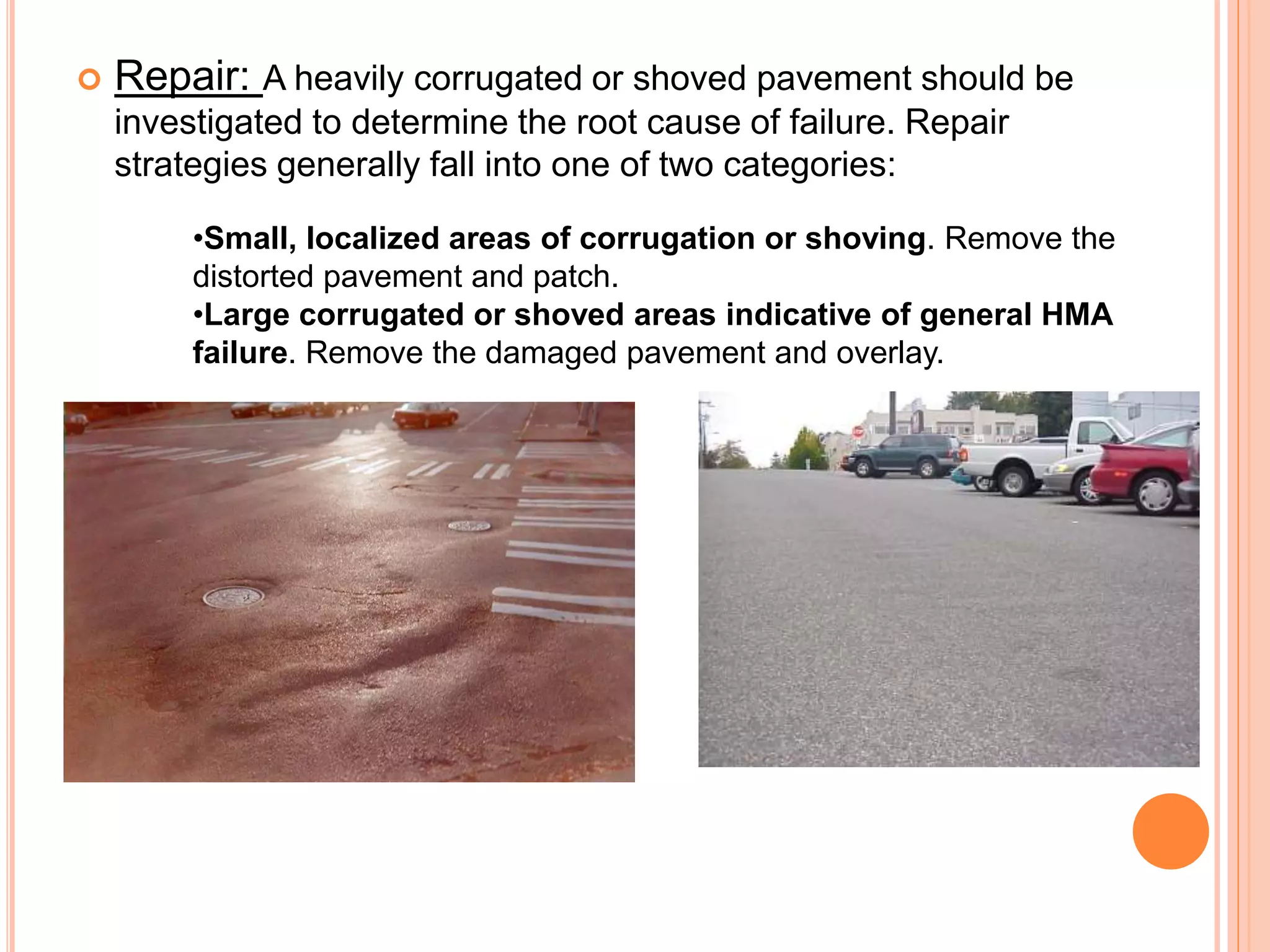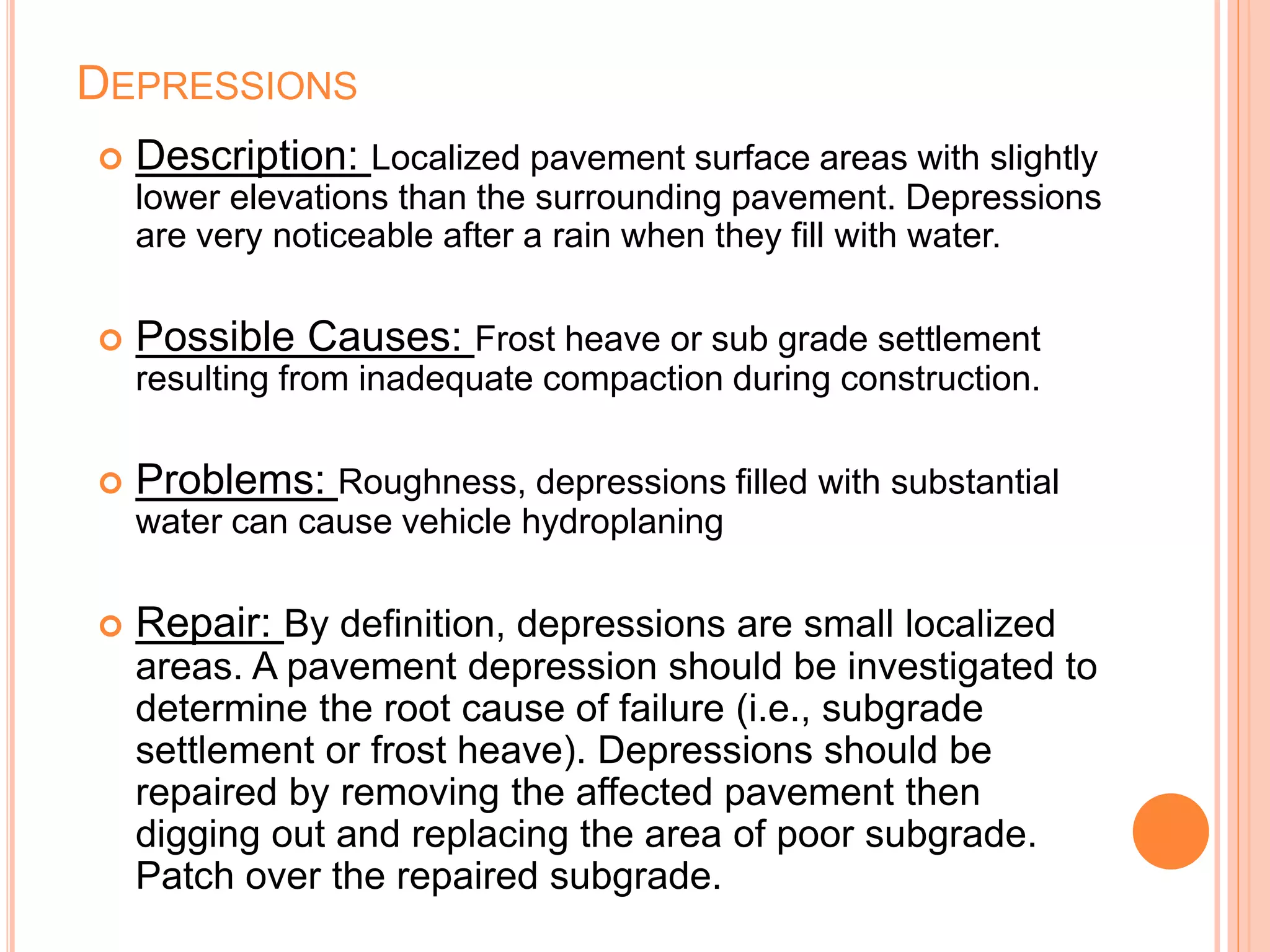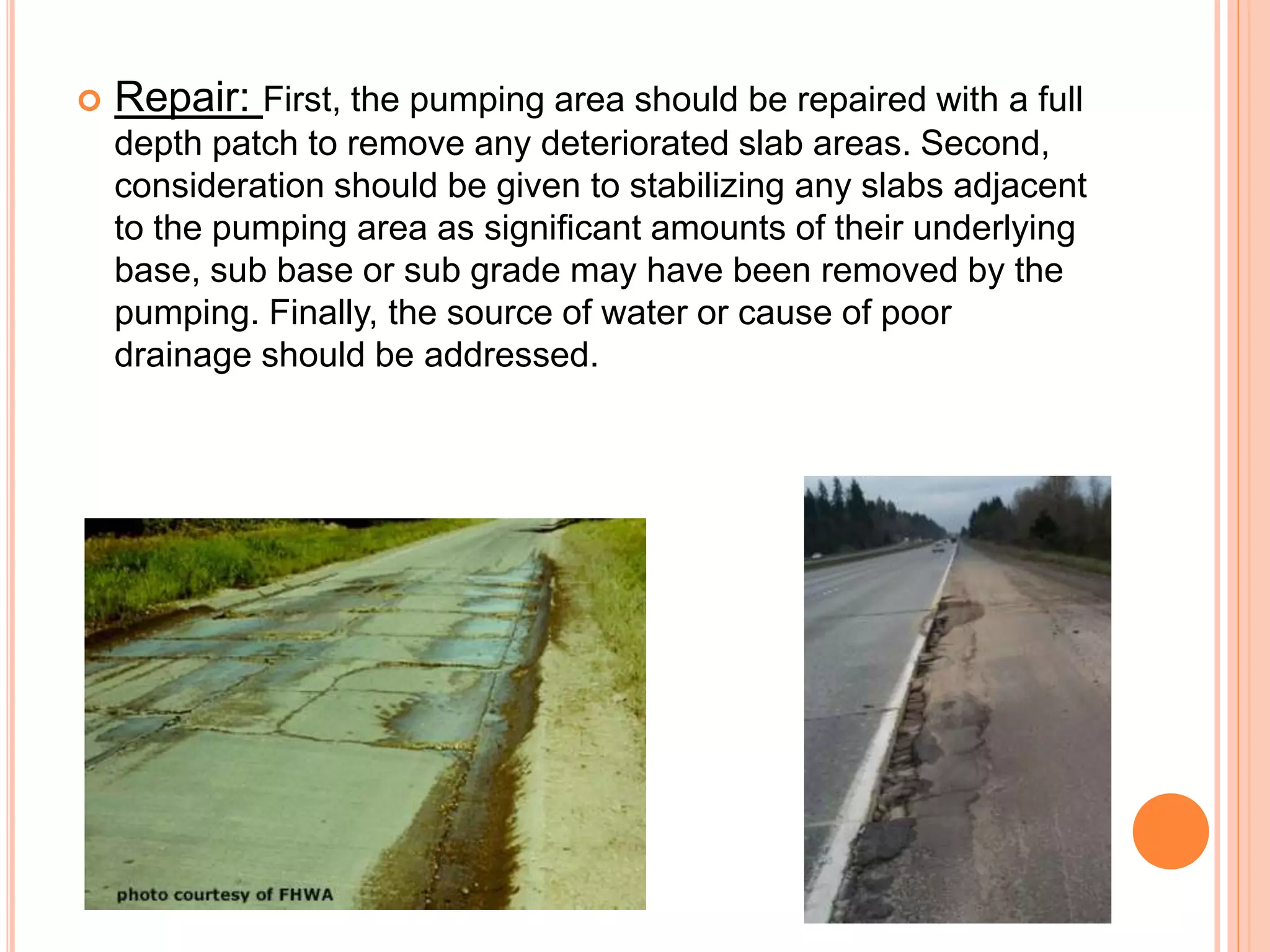The document discusses various types of failures and defects that can occur in road pavements, including rutting, cracking, potholes, bleeding, raveling, stripping, corrugation and shoving. It provides detailed descriptions of each failure mode, possible causes, problems they cause, and repair methods. Some common failure modes discussed are fatigue cracking, alligator cracking, transverse cracking, block cracking, rutting caused by insufficient compaction or mix design issues, and potholes formed from water and traffic damage over time.

